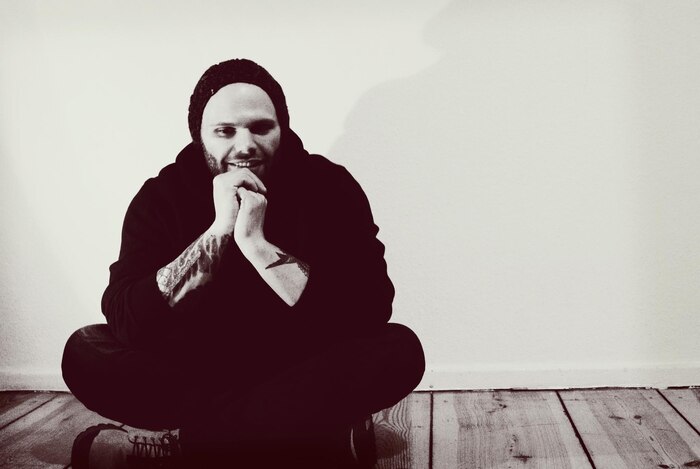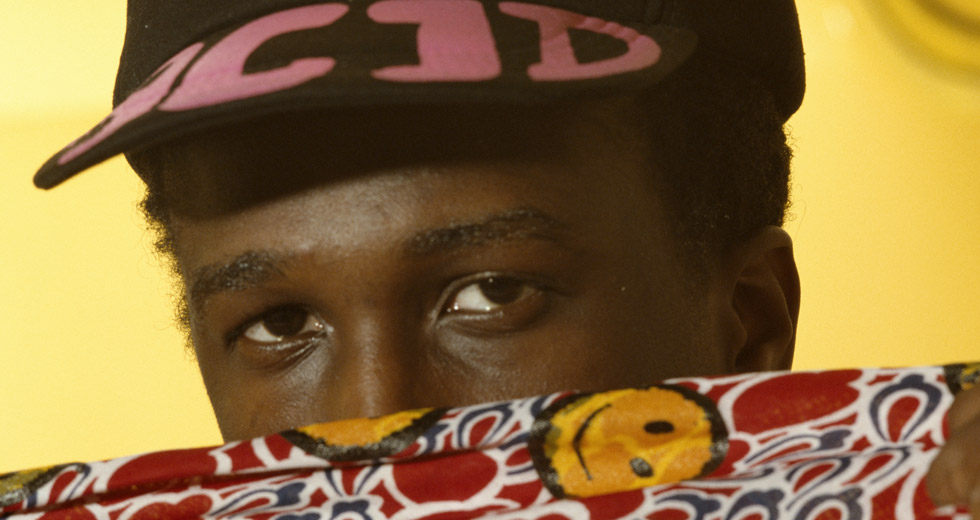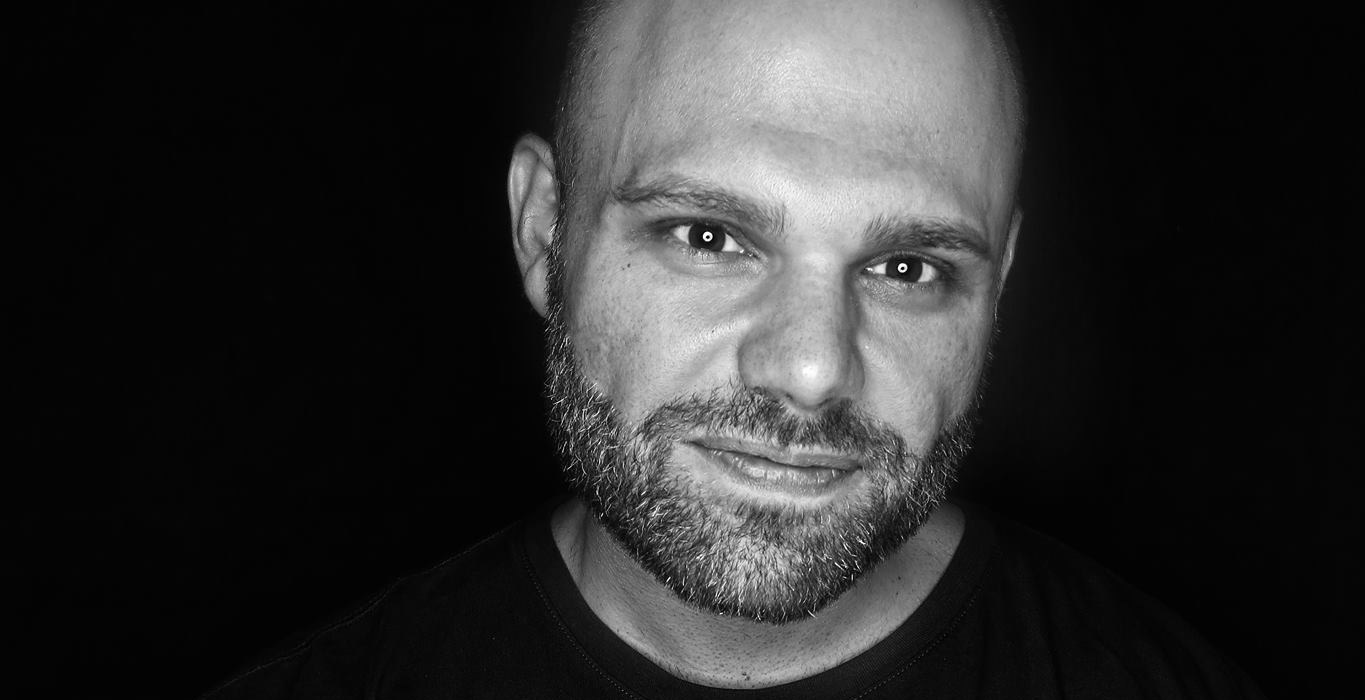Anthony Parasole Won’t Turn His Back On The Dancefloor
The techno lifer shares the concepts guiding his debut album
Born and raised in New York City, Anthony Parasole has lived through multiple generations of the city’s nightlife, soaking up all kinds of knowledge and experience along the way. Still, his reach extends far beyond his hometown, as he’s become a resident at Berghain while also garnering accolades for his label The Corner, not to mention the Deconstruct imprint he runs with Levon Vincent. With his first album, Infrared Vision, about to surface on the Dekmantel label, Parasole spoke to Shawn Reynaldo for Red Bull Radio’s First Floor about its genesis and the unexpected sounds that influenced its creation. Read an excerpt below, and listen to First Floor on Red Bull Radio here every Thursday at 1 PM EDT.

Your new album on Dekmantel is called Infrared Vision. Is there anything to that title, any sort of concept holding the album together?
Absolutely. Infrared vision is basically night vision, right? It’s the goggles to see body heat. Conceptually I wanted the album to be kind of colorful. When you look into these glasses, you see reds and yellows for body heat, and when your DJing, you’re always DJing in these black boxes at night and there’s a lot of body heat. Basically our life is night-time: we’re nocturnal. I wanted to capture a more colorful take on techno and house and different variations of sounds, and also project what we do at night. That’s basically conceptually where my head was at.
From what I’ve read it seems like you took a very methodical approach to putting the album together. Can you tell us a bit about your process?
Because I’ve been writing singles for so long, I kind of always have an idea when I go into the studio, writing with a purpose. I’ve never been the kind of artist [that] writes music just to write music. I don’t noodle in the studio. I always write with a purpose. If I’m trying to make a certain style of a house track or a techno track or whatever, ambient, my mindset is already made up before I even start writing. I can actually hear the music, usually. I took those techniques and I implemented it into an album and I just took my time basically writing the album in word form, telling my own story throughout the album. I was listening to non-techno, because I didn’t want to be influenced by the sounds and color palette that everybody is using these days. It’s kind of grey-scale, monotone. I wanted my music to be more lively.
I was listening outside house and techno. When I would hear stuff that I liked, I would just jot it down and conceptually keep writing ideas and patterns until the album came to a certain amount of music. Then I started transferring those ideas to MIDI notes on the hardware and then just kept writing. That was pretty much how I did it, but every track and every sound and every movement was kind of already thought out prior to sitting in the studio. There are only one or two tracks that I just wrote organically in the studio without having an idea. One was “Momentum” and the other one was “Zenith,” where I knew I wanted to do a beatless track, but I didn’t know how I wanted to approach it. That kind of came together very in the moment.
When you’re writing down these ideas for songs, what kind of things are you writing down? Is it single phrases, descriptive terms?
I use a lot of sample-based techniques, kind of hip-hop style. If I hear something that I like and I want to take from it, I’ll just write the sample, then I’ll chop the sample. Then, as I’m writing the music and I’m hearing it back to myself... I’m trying to think about how I want this to progress. I’ll start writing stuff like triples on a hat, a chord progression here. Basically I write my music in song form, so it would be like verse, chorus, verse, chorus, so it gives the dancefloor an expectation of some sort of similarity to a song. That’s how I put together my tracks. It’s not typically going to be a verse where you can sing along to it – it might be a synth line.
When I’m writing my notes, I’ll write that stuff. I’ll write how I’d want to approach that break down to a single note, where I’ll be like, “Cut bass here, slide hat into a delay reverb and then into thin air. Create a break.” I can almost hear the music prior to me writing the tracks in the studio.
You mentioned that while you were making the record, you didn’t listen to a lot of house and techno. What kind of music were you listening to?
I was listening to a lot of jazz, actually, Herbie Hancock and Miles Davis and stuff like that, just because a lot of that stuff is dark. I love Antonio Sánchez because his percussion is bananas. My music is very percussive, kind of Afro-influenced and jazz drum-influenced anyway. I was listening to these tracks or music to get ideas and to break normal house and techno tropes. When you listen to a lot of tracks, the hats always fall on the three, so it’s like, kick, hat, kick, hat, kick, hat. I didn’t want to get stuck in those kind of time signatures. I wanted my music to progress differently and have different variations to it.
I was listening to Nine Inch Nails because I love the colors of the synths that he uses, and Prince just because I like the way he programs all his machines and drums. Obviously, the music is very different, but there’s a lot of signatures and patterns in Prince’s music that influence house and techno. [I was also listening to] tons of hip-hop, because I grew up in a time when hip-hop and house and techno were married. You can get a lot of ideas from listening to something really hard-hitting, like a Wu-Tang record. To be honest, I love Timbaland’s productions and I listen to a lot of his stuff, as well as the Neptunes. I listen to the Clipse record and there are a lot of sounds and rhythms that I was really listening to and digging into and dissecting throughout my production process. I find the way the Neptunes write their music to be very interesting. They kind of grab you and they hold you there.
I’ve been DJing for so many years that I got to a point where I had to expand.
Aside from your production work, you’re also a DJ. You could even arguably say that you’re better known for your DJing than for the records you’ve put out. These days I think you might be DJing more than you ever have. How does that experience that you’ve accumulated in the DJ booth filter into the music you make, and this album in particular?
A long time ago I read an interview from Easy Mo Bee – he produced Biggie Smalls’ first album. In New York City, he’s one of the most legendary hip-hop DJs. He really wasn’t well-known as a producer. He said in an interview, “It was a natural progression for me. When I got to the pinnacle of my craft, I took the next step of learning how to produce music. It was kind of just like a natural progression for me.” That’s what happened with me.
I’ve been DJing for so many years that I got to a point where I had to expand. That progression started translating into the way I started to approach my DJing years ago. Every year, my DJing and my productions kind of tie together, to the point where I’m almost playing live now with the new technology, because I’ll have parts to tracks, synth lines, I bring effects. I’m piecing together my own pieces sometimes depending on how long my sets are and what I want to do.
It teaches you a lot about building tension and creating peaks and valleys, how to deconstruct tracks and how to layer tracks together with vocals and stuff like that, as when you’re DJing. This is stuff that I might not have learned if I didn’t take that step into production.
When I was writing the album, one of the key components to it was I always had a thing in my head... Every album today, it’s like it’s everyone’s voice to say, “I don’t make dance music no more when I make my album.” It’s the cliché ambient tracks and all that stuff. I don’t want to do that. I wanted my album to also be able to be used in a nightclub or in that kind of context, on a dancefloor as well as in a listening experience.
As a DJ and a producer I wanted to marry both of those techniques together and not veer so far to the left that it became this huge experimental piece to show how deep I am as a producer, and shun what would I really do as a DJ and producer together. That was definitely one of my big motivations when I was writing the album, not to turn my back on the dancefloor.
There’s a lot of movement and a lot of momentum coming out of New York City.
You grew up in Brooklyn and still live there part-time. There’s been a lot of talk recently about how electronic music and techno in particular have blown up and taken over a lot of the music scene in New York. Since you’re a New York City lifer, what’s your take on the current environment, and how does it compare to the past days of electronic music there?
In New York City you see a lot of ebbs and flows. I still don’t think it’s as big as the ’90s, personally, because it’ll never be as big as the ’90s, unfortunately. That’s not because of the city not embracing it or not wanting it to be. It’s just the infrastructure is not the same anymore and you don’t have the avenues to get the content the same way.
In the ’90s you would have FM radio playing house and techno music all the time. You would have world-renowned deejays like David Morales, Satoshi Tomiie, Armand Van Helden playing on the radio. I know this sounds kind of crazy, because the internet now makes everything very accessible, but it’s not same thing, because when you have two or three radio stations playing this stuff, it becomes the go-to reference. Nowadays you’re flooded with thousands of podcasts weekly where you can’t really grasp one outlet to be the go-to source, whereas before you would just put on 98.7 and listen to Blaze and then you know that in two hours you’re going to have this next guy on, Armand Van Helden or Tony Humphries or whoever. The music became so readily accessible that at any moment we had like ten clubs that were the size of Berghain, packed.
That’s never going to happen anymore, but the scene now is thriving. There are tons of new record stores. There are tons of hungry young kids making music. There are great record labels coming out of New York and Brooklyn in particular. You have a great DIY warehouse scene with tons of amazing parties like Unter and Mutual Dreaming and great clubs like Output and now Schimanski. You have the Bossa Nova Civic Club. To some extent that’s a much smaller scale, but there’s a community that’s driving out of that little scene. That little scene in Bushwick is really growing exponentially and you have a lot of kids coming out of it and a lot of crews now. There’s a lot of movement and a lot of momentum coming out of New York City.
I think it’s really great to see at any given moment you can go to four to five parties and see, like, 1,000 people at each party. In the ’90s it was way different, because you could go to Palladium and see 5,000 people. If you took all the people that are going out to each party – and every party is full is right now – that was the equivalent of one party back then. Or you went to the Tunnel – The Tunnel was so massive it was an entire city block. For people to put that into any perspective... I can’t really explain how massive that club was. If you took all the people that are going out right now, they wouldn’t fill Tunnel in the ’90s. But that doesn’t mean that the scene is not thriving. The scene is really healthy right now. I think it’s in a really great place and it’s kind of the main reason why I don’t leave.
Truth be told, I think the scene in North and South America in general is not just on the up or growing. Some of the best parties I’ve played happened to be on this side of the ocean.

